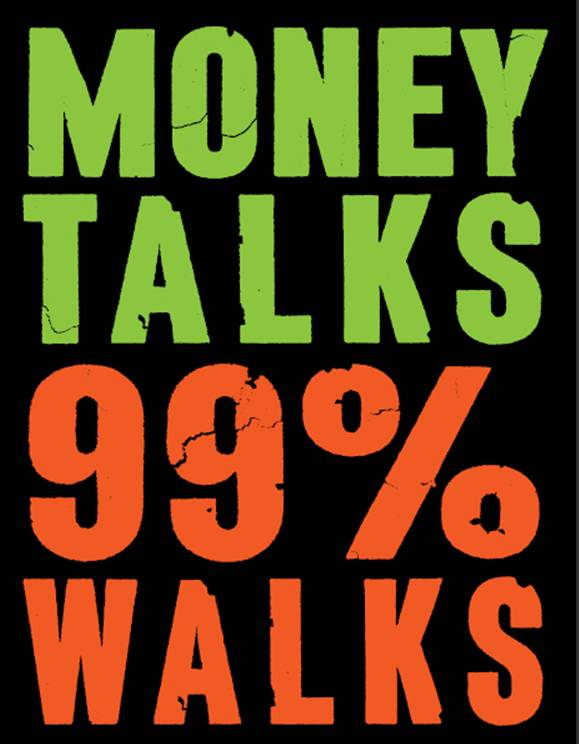A Polanyian Perspective on the Contemporary Global Financial Order.
Some of my politics reading this week has been on the work of Karl Polanyi. He made a brilliant contribution to social-economic theory in the Great Transformation. This is a summary of a 1995 journal article by Eric Helleiner in Studies in Political Economy on his work and it’s relevance at the time. In light of the current global financial crisis and the rising of the Occupy movement, his work is of crucial importance. I strongly recommend you give this a read.
- The Bretton Woods order was constructed in 1944. The same year, Karl Polanyi published The Great Transformation.
- Global finance has expanded massively since then, supported by the rapid globalisation of market forces.
- Neoliberals argue that the recent financial globalisation has been the inevitable product of technological and market developments.
- A Polaynian perspective would suggest this is not the case but the contemporary financial order has been ‘actively’ made by states, particularly decisions to dismantle the capital controls that have been established under the Bretton Woods order.
- He argued that the 19th Century world market economy emerged from deliberate state decisions, and not simply from inevitable or ‘natural’ economic forces – “laissez-faire itself was enforced by the state”.
- Polanyi also stated that the liberal project was destined to fail because society would not tolerate the instabilities and upheavals that accompanied an economic order based on the self-regulating market. It produced countermovements that pushed for social control over markets.
- The Bretton Woods regime was the produce of a long countermovement against the 19th century liberal international financial order.
- It endorsed for the first time, strong capital control over the post-war world; society demanded that finance be its ‘servant’ not ‘master’ – or in Polaynian talk, it demanded a socially embedded international financial order.
Why have states actively reconstructed a globally-integrated financial system?
- Partly due to the growing prominence of neoliberal thinkers in global finance policy making circles who have argued against capital controls and the Keynesian welfare state as impeding market efficiencies.
- Another factor stems from the vested interests of those who gain most – the USand UK– both strong supporters of the neoliberal order. The USfound itself in a ‘hegemonic’ position within a globally integrated financial order that could be used to its advantage; the UKhad a long history as an international finance centre.
- The trasnationalisation of business was also important. The business class of developed states became increasingly frustrated by restrictive capital controls.
- Finally, once Britainand the UStook the active decision to deregulate financial markets, other states had to follow suit to prevent footloose financial business and capital from being lured away to the more attractive British and US markets.
- In short, the neoliberal financial order was the result of active political choices and states decisions to liberalise existing capital controls; it was not the natural result of the self-regulating market.
Emerging Counter-movements?
- Polayni’s analysis would suggest that the current financial order would bring about a world of instability and social upheaval, inducing countermovements to bring finance back under a degree of social control.
- To what extent is the current order causing social dislocation and is there evidence of Polanyi-style countermovements arising in the financial realm?
- Enormous and volatile movements of capital have often caused exchange rate instability and sudden changes to international trade patterns – these have pushed painful and difficult adjustments on social groups.
- Financial globalisation has also impeded the control of governments over economic policy. There is a casino-like nature to today’s global financial markets.
- “From school-leavers to pensioners, what goes on in the casino in the office blocs of the big financial centeres is apt to have sudden, unpredictable and unavoidable consequences for individual lives. The financial casino has everyone playing the game of Snakes and Ladders. Whether the fall of the dice lands you on the bottom of the ladder, whisking you up to fortune, or on the head of a snake, precipitating you misfortune, is a matter of luck. This cannot help but have grave consequences. For when sheer luck begins to take over and to determine more and more of what happens to people… then inevitably faith and confidence in the social and political system quickly fades”
- The first piece of evidence is the work of the G-10 central banks working within the Bank for International Settlements (BIS). Central bankers seem like unlikely leaders of this countermovement, however Polanyi’s analysis gives them a central role in the late 19th Century.
- It was elite groups who demanded that central banks actively intervene in unregulated financial order to protect businesses from unstable, fluctuating business conditions and financial crises. Polanyi saw this as important for setting the scene for a more interventionist form of countermovement in the financial sector.
- A further example of modern countermovement is the recent debate on ‘Tobin tax’ – a small tax on foreign exchange transactions that has gained in support. James Tobin argued that this would discourage speculative cross-border financial movements that are causing socially-disruptive adjustments to trade patterns and exchange rates. It could also viably raise revenue to fund domestic social programmes or internationally to address global inequities. Opponents of the tax argued unless it was introduced in all financial centres globally it would fail (advocates of the tax point to the co-operation offered by the BIS regime as a case in point). Such a tax would depend crucially on the support of the USand UK
- Additionally, the European Monetary System is a perfect example of regional financial zones to of monetary stability in the increasingly volatile financial environment.
- Another example has been the increased use of ‘local currencies’, such as those implemented in Australiaor Sweden(another good example is the Brixton Pound). These currencies, which are not convertible to national currencies, offer a means of exchange within a defined local community network. This reduces the vulnerability of local communities to the global financial ‘casino;.
- A final type of countermovement has been the emergence of nationalist groups who attack the new globalised financial markets for undermining national autonomy and sovereignty. Often quite right of centre (e.g. the BNP or Jean Marie Le Pen), their rhetoric can be viewed as reminiscent of critiques of ‘haute finance’ from the interwar period. This is the only countermovement that focuses on unilateral behaviour by a single nation-state, most are advocating innovative forms of supranational policy cooperation.
- More broadly, many of the countermovements recognise that the nation state as a political entity has been challenged in a more serious way by those constructing the contemporary world market economy than was the case in the 19th Century. During this period, the liberal international order consolidated the role of the state.
- Neoliberal in contrast have been actively reducing the power of the nation-state in part by weakening national institutions that served to ‘embed’ markets from the late 19th Century onwards.
- Countermovements are varied in their social base. Many advocates of a new financial order argued that the ‘society’ in which the market is to be re-embedded is not just the national community but also the local, regional and global communities. Forms of regulation are to take a multi-tiered fashion at the local, national, regional and global levels.
Conclusion
- A Polaynian analyis offers an important alternative perspective to the historical origing sand future prospects of the contemporary global financial order from that offered by neoliberals – it has been actively implemented decisions of states.
- This perspective also questions the durability of this order and draws attention to growing countermovements.
- This journal has not argued that history will repeat itself, there are clear differences between today and the pre-Bretton Woods era – mainly the impact of globalisation.
- The similarity of both orders is the centrality of the world financial order within the broader global political economy.
- Polanyi argued that haute finance was one of the central pillars of the liberal international economic order – in today’s world finance is crucial, it represents the ‘infrastructure of the infrastructure’.
- Although practical reform implications of Polanyi’s work is different in today’s world, the aspiration to bring finance under social control resonates strongly today.


Pingback: Global Elites Are Confused, Reactive, And Sinking Into A Quagmire Of Their Own Making | Shift Frequency